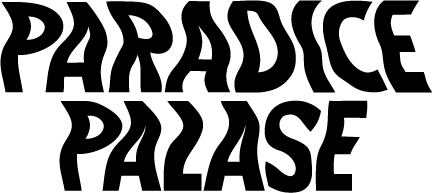Interview: Lucha Rodríguez
Lucha Rodríguez is a Venezuelan-Panamanian artist based in Atlanta, GA. The artist is known for her distinct "knife drawings" created with her inventive bas-relief technique on paper. She begins her work in the studio with a ritualized routine informed by her training as a certified hypnotherapist. Each cut into the paper requires unwavering precision and dexterity.
Rodríguez received her MFA from SCAD. Her work has been exhibited in museums including The National Museum of Women in the Arts, The High Museum, and the Telfair Museum, and through programs including Ortega y Gasset Projects and residence programs at Wassaic Project, Vermont Studio Center, and MASS MoCA. She is a recipient of the Fulton County Arts and Culture Artist Grant and Forward Arts Foundation Edge Award.
Read our interview with Lucha below!
Proximity Spectacle, solo exhibition at Paradigm Gallery + Studio, Philadelphia, PA, 2023
PP: What motivates you to make art?
LR: Pure curiosity towards our perception process. I am fascinated and inspired by the way we can perceive so much around us if we intentionally focus on something and at the same time we have so many preconceived notions of what we think is going on, or how things are, that we can ignore what’s going on in front of us. Our perception and state of mind, how much information we gather and process, and how we relate to all of it are so intriguing to me. There’s always so much more to be experienced if we continue to question how we do, see, and perceive things. Even a single sheet of paper can surprise us and become an object for contemplation, calm, curiosity, and wonder.
Es Imaginario Pero Refiere a lo Real III, manipulated giclée print on metallic paper, 16 x 12 inches, 2023
(Detail) Es Imaginario Pero Refiere a lo Real III, manipulated giclée print on metallic paper, 16 x 12 inches, 2023
PP: Walk us through a typical day in your studio or generally through your process to make new work.
LR: I come into the studio, open all the blinds, and let the natural light wash over the room. I get my coffee and water ready. I do self-hypnosis and then write any thoughts, memories, sensations, colors, or anything that came up during my hypnosis. Then I sit down in front of my drafting table by the window and follow whatever impulse or inspiration I have without judging it. I put that aside and start choosing and prepping paper and finding the best spot in the studio with natural light to start cutting. I take breaks and move to the other side of the studio to do office work, send out emails, get ready to ship, and deliver finished works and whatever needs to be photographed, photoshopped, or edited. Then I go back to the drafting table cut a little more and continue the work I was doing in the morning. I only work during the day because I need to study the natural light and how it behaves on the surface of the paper. I have the same routine every day unless I have a special project, art fair, or exhibition installation. Being in my studio makes me want to create more and improve my practice. I appreciate every minute I spend there, it’s a very special place for me, and I hope it will continue to be for a very long time to come.
PP: Is community something you value in your practice? Why or why not?
LR: Everything exists within a context so community is integral to the work. You are already part of something when you start working, you already have some sort of privilege, and you belong to a certain group and with that awareness and from that point of view you share your experiences with others. Just the language we use or choose to express ourselves gives out a social context from which the work is being created. Then when you start sharing that point of view over and over it can spark conversations that create new communities organically. That’s the whole point of it. From your community, you create other communities and those keep growing, and expanding but you cannot forget the nucleus where the whole thing started because that’s the essence of it all. You do need people around to talk things out and to develop and test out ideas. You have to consume lots of creative expressions and digest conversations to figure out what’s going on around you. Nowadays you can do a lot of it virtually, no problem. Just communicate as honestly as possible. Community is the best part of being an artist.
Studio view
Work in progress
PP: What are ways you support other artists?
LR: I’m a CHT, Certified Hypnotherapist, and EFT practitioner registered with the International Association of Counselors and Therapists. I offer my services to other creatives as a way to support them. I understand the creative process can be quite emotionally demanding and also stressful for the body and mind of an artist. I set aside at least a couple of hypno-sessions a month specifically for those in the creative field. It started with a few artist friends and then word of mouth. The artist attending the last session always sends out another person they think might benefit from one of the sessions offered the next month. It is completely confidential and it brings me joy to be able to introduce them to perhaps new resources for managing the stress associated with the creative lifestyle.
PP: Who is a current muse for your practice? Could be anyone fictional or real, dead or alive!
LR: Conceptually, Michael Watson a certified Hypnotherapist and Neurolinguistic Programming Master trainer. I find his theories of Evolutionary Hypnosis fascinating. Aesthetically, Matraka drag queen. Matraka incorporates cultural references and childhood memories into exquisite nostalgic performances that deeply resonate with me.
To learn more about Lucha’s work, see her Instagram and Website





